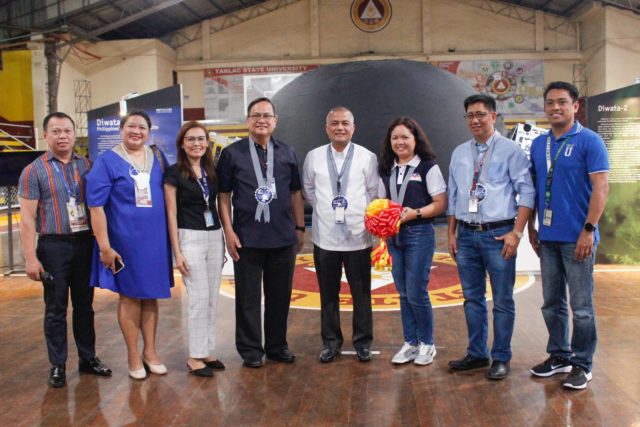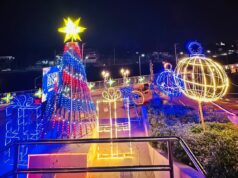TARLAC CITY (PIA) — Department of Science and Technology (DOST) Central Luzon urged the youth to partake in maximizing space technology applications to achieve national growth and development.
In his speech during the launching of the Space Technology Applications Exhibit in Tarlac, DOST Regional Director Julius Caesar Sicat cited the advantages of space science and technology in agriculture, aquaculture, weather forecasting among others.
He said that satellite images can predict rice field productivity, identify polluted rivers, and collect calamity-related information.
“We must undertake programs that would enhance our influence as a group. A community that would embrace the potential contributions of space technology applications toward sustainable development,” Sicat stressed.
Relative to this, he mentioned that the DOST funded the projects of Tarlac Agricultural University and President Ramon Magsaysay State University to measure the number of hectares of rice fields in Central Luzon, and to determine the best portion of Zambales seas for aquaculture, respectively.
“As the head of the National Program on Smart Agriculture, we will maximize satellite images to establish quality and sustainable programs for agriculture. We will do this with the help of space technology, computer programs and our partners,” Sicat said.

Also, he encouraged the students to become part of the science community, adding that with 270 researchers, scientists and engineers per million population, the Philippines is way below the 380 per million population standard.
“We are here because we want to hone more scientists, researchers and engineers in the country. We are way below standards hence, government agencies are holding activities such as this to showcase the beauty of science and technology,” he stressed.
As the next generation, Sicat encouraged the students to use science to further improve the quality of life.
“Let us seize the opportunity that is in front of us today. Be the game-changers. Be the innovators. Be the spark that would transform our region, if not our country,” he added.
Philippine Space Agency (PhilSA) and Philippine Atmospheric, Geophysical and Astronomical Services Administration brought the space exhibit at Tarlac State University which features replicas of Philippine microsatellites and space technology applications by Filipino scientists, and a mobile planetarium.
PhilSA was created by virtue of Republic Act 11363, otherwise known as the Philippine Space Act in a bid to address space science-related activities and issues in the country. (CLJD/TJBM-PIA 3)





